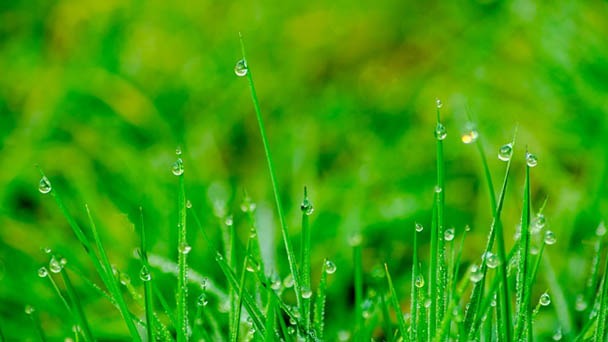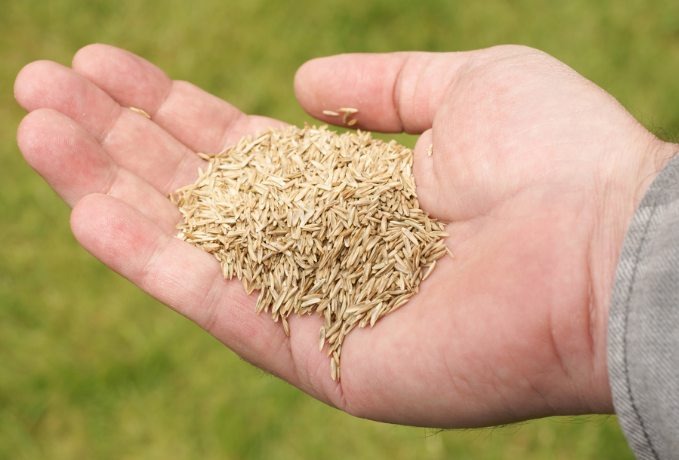When to Apply Pre-Emergent - How to Prevent Weedy Lawn
Written by Ivy
Jan 06 2023

When weeds grow, your yard can become susceptible to dangerous diseases, insect infestations, and drought. Effective pre-emergents should be a part of your lawn care regimen if you want to keep your yard free of weeds that can harm it.
In general, you can also use a pre-emergent herbicide in the fall to stop winter weeds from sprouting in the spring. You might need to reapply the herbicide in the spring for best results, as fall applications are less efficient than spring applications.
Pre-emergent, however, must be used at the right time of year in order to be effective. When to apply pre-emergent herbicide, how to apply it, and some helpful hints for using the product are all covered in this article.
What is Pre-Emergent Herbicide?
Pre-emergent herbicides are chemicals that are applied to your healthy lawn or flower bed to stop weeds from sprouting. This method slows down growth by preventing the emergence of new roots, even though it doesn't affect the weed's seed germination.
Types of Pre-Emergent Herbicides
There are typically two types of pre-emergent herbicide: liquid pre-emergent and granule pre-emergent. Each type has distinct qualities and ways of application, even though they are all designed to fight sprouting weeds.
Pre-emergent liquids are typically sold in sprayers with pumps or hose connections. This pre-emergent's broad application is one of its advantages because of how quickly it spreads across your lawn due to its quick flow rate. There are a few advantages to a granular treatment, even though most lawn care professionals favor liquid pre-emergents.
Compared to their liquid counterpart, granular pre-emergents require little to no mixing, which facilitates preparation. Furthermore, you can apply granular pre-emergent with a lawn spreader you already have for fertilizing.
When to Apply Pre-emergent Herbicides
The most important aspect of preventing weeds from sprouting up in your yard is the time of year you apply your pre-emergent herbicide. Two factors — season and ground temperature — determine when it's the right time to apply your herbicide:
By Season
Every season, pre-emergents are used to stop the germination of weeds. A post-emergent can be used when weeds start to emerge after a pre-emergent, which typically lasts three to five months.
For example:
To avoid winter and fall weeds like bluegrass and prickly lettuce, apply a pre-emergent herbicide from August to November.
To get ahead of early spring and summer weeds, apply pre-emergent herbicides around mid-March.
By Ground Temperature
Once you are aware of when to apply pre-emergents, you also need to be aware of the ground's temperature.
For example:
To prevent summer weeds, apply a pre-emergent herbicide once the ground temperature has been 55 degrees for at least 48 hours.
To prevent winter weeds, apply a pre-emergent herbicide in the fall when ground temperatures reach 70 degrees and continue to drop.
Placing a thermometer 2 inches below the soil will allow you to measure the temperature of the ground.

How to Apply Pre-emergent Herbicides
Pre-emergent herbicide application technique is equally crucial to weed deterrent application timing.
Applying your weed deterrent correctly requires the proper equipment, the right pre-emergent herbicide (granular or liquid, selective or non-selective), and systematic spreading or spraying of your weed killer. (Read More: Roundup Weed Killer Review - Is It Safe to Use?)
Oh, and before you apply your pre-emergent herbicide, check the weather on your smartphone to ensure that it won't be washed away by a summer rainstorm. Additionally, if there has been a sustained period of rain, you should wait until the ground is completely dry before applying the herbicide.
How to Apply Granular Pre-emergents
What you'll need: A spreader, either manual push (similar to a wheelbarrow) or hand-held styles.
What to do next: Pre-emergent herbicide granules should be loaded into your spreader in accordance with the label's recommended application rate. To fit the area of your yard where you intend to apply your pre-emergent herbicide, calibrate the spread.
Release the handle on your equipment and walk across your entire lawn to apply your granular pre-emergent, spreading the granules as evenly as you can. To avoid an uneven application, be sure to go over the same area repeatedly without exceeding the necessary application rate.
How to Apply Liquid Pre-emergents
What you'll need: The majority of liquid pre-emergent herbicides come with a sprayer, but you can also buy a portable pressure sprayer tool, which is available in different sizes and types.
What to do next: Use the recommended ratio listed on the herbicide label to combine your liquid pre-emergent with water. As you mow your lawn, evenly and in rows, apply your liquid herbicide to the area of your yard.
Evenly spread out your liquid pre-emergent.
Selective Vs. Non-selective Herbicides
If you selected a selective or non-selective herbicide, it will also affect how you spread your pre-emergent. For example, if you selected a pre-emergent selective for crabgrass, you can apply the pre-emergent evenly over any area with that particular weed without worrying about harming other plants or grasses in the area.
You'll need to have a steady hand and an attention to detail if you select a non-selective pre-emergent. You must be careful when applying a non-selective pre-emergent to avoid killing healthy, non-weedy vegetation.
Water Your Lawn After Applying Herbicide
Pre-emergents and irrigation go hand in hand. Pre-emergent herbicides, whether they be organic, synthetic, liquid, or granular, almost all require water to function.
To make sure the herbicide gets to the seeds by moving through the soil, you should sprinkle water on the area within a short period of time (three to five days).
Pre-emergents must not be used on soggy lawns. Once you have applied your herbicide and the grass is dry, water the lawn.
Pro Tip: Make sure to thoroughly saturate the area with water to ensure the herbicide penetrates to the seeds. Granular pre-emergents typically require more water than liquid types.
Common Pre-emergent Application Mistakes
Uneven application: Patches of weed may appear in your yard if you apply your pre-emergent herbicide unevenly or in some areas but not others.
Applying too little or too much herbicide: If you use too little herbicide, the product won't work, and weeds will soon start to grow there. Too much herbicide can damage the grass and other nearby plants, which can be problematic when it comes time to reseed the area.
Don't Combine Pre-emergents With Other Lawn Care
Pre-emergent application is a task that needs to be completed independently. The effectiveness of the herbicide may be hampered if you've recently overseeded, fertilized, or aerated your lawn.
Additionally, you should wait at least a year before laying new sod over areas where pre-emergent herbicides were applied.
Important Tips for Using Pre-Emergent Herbicide
Before applying pre-emergent weed control, consider the following application tips:
- Apply pre-emergent evenly—You must make sure every square inch of your lawn is covered if you want to completely prevent weeds from growing there.
- Don't forget water—Water activates herbicide applications, dispersing chemicals throughout the soil of your lawn. Apply pre-emergent before a predicted downpour to conserve water. If rain isn't in the forecast, be sure to water your lawn after application.
- Limit lawn activity—Following application, it's critical to prevent any disturbance of the soil holding the pre-emergent. Therefore, wait to mow until the pre-emergent has been watered after application and avoid aerating afterward.
- Maintain your lawn—A healthy lawn can naturally outcompete common weeds with proper upkeep. Mowing, appropriate irrigation, and pest management should all be part of regular maintenance. Consider using a lawn care service if you lack the time to maintain your lawn.
FAQs
When to Apply Pre Emergent in Flower Beds
If mulch is going to be used and annuals are planted, a pre-emergent application should be done after mulching. Every year, I typically use three applications. One at the end of March or the beginning of April, one in June after I mulch, and another at the end of September or the start of October to control winter annuals.
When to Apply Pre Emergent After Seeding
My freshly seeded lawn—should I add pre-emergent? In a word, no. The pre-emergent can have an impact on germination because freshly seeded lawns are still in the process of germination. More mature lawns are sturdier against the herbicide, so it's best to wait at least 4 months after planting the lawn to apply the pre-emergent.
When to Apply Pre Emergent in Fall
The ideal time to apply a fall pre-emergent herbicide to your yard is between August and November when the soil temperature is below 70 degrees and dropping. Both grasses with cold and warm seasons exhibit this trait.
When to Apply Pre Emergent in Spring
At least twice a year is recommended for applying pre-emergents. As previously mentioned, they should be applied in the spring before the ground temperature reaches 55 degrees Fahrenheit. After the temperatures start to drop in the early fall, it should be applied once more.
What Month Should I Apply Pre Emergent
- Apply a pre-emergent herbicide from August to November to prevent winter and fall weeds like bluegrass and prickly lettuce.
- Pre-emergent herbicides should be used around mid-March to prevent the early spring and summer weeds.
Latest Updated
- Benefits of Bugleweed - 7 Science-backed Health Benefits
- Bugleweed Dangers & Side Effects - Is It Poisonous?
- How to Plant Evergreen Trees - What You Should Know
- When to Plant Evergreens - Grow Guide for Evergreen Trees
- 12 Wonderful Evergreen Shrubs for Your Garden
- 12 Popular Evergreen Plants with Pictures for Beginners
- When And How To Prune A Lilac Bush Like a Pro
- How to Grow & Care for Lilac Vine (Hardenbergia Violacea)
- Japanese Lilac Tree (Syringa Reticulata) Care & Propagation Guide
- Shumard Oak Pros and Cons - What to Know
Popular Articles
- Winter maintenance of Antirrhinum Majus
- How to Grow Terminalia Mantaly Tree
- How to Grow and Care for Crossostephium Chinense
- How to grow Antirrhinum Majus in spring
- Peristeria Elata (Dove Orchid) Profile: Info & Care Guide
- Underwatered Snake Plant (Sansevieria Trifasciata) - Signs And How To Fix
- How to Care for Brazilian Jasmine Plant (Mandevilla Sanderi)
- How to Grow & Care for Graptopetalum Purple Delight in Summer
- Rosa Chinensis (China Rose): Plant Growing & Care Tips
- How to Care for Baby Sun Rose (Aptenia Cordifolia)